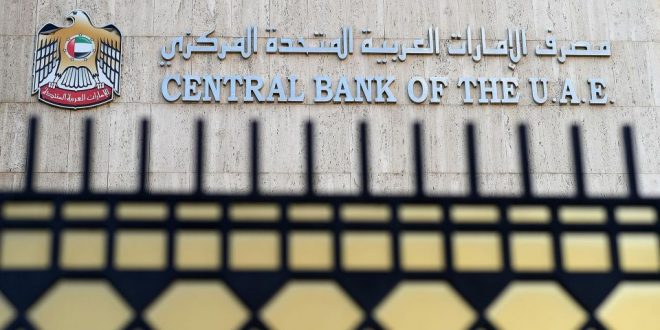The UAE’s central bank revised its growth forecast for the economy upward to 2.4 per cent for 2019, from an earlier projection of 2 per cent in May this year.
The economy grew by 2.2 per cent in the second quarter, with non-oil growth expanding 1.5 per cent, the central bank said in a report on Sunday, compared to an official estimate of non-oil growth of 0.3 per cent in the first quarter by the Federal Competitiveness and Statistics Authority.
“The improved outlook for growth is due to expected rising public and private spending at the federal and emirate levels, higher investment before the highly-anticipated Expo 2020 and continued regional economic recovery, in light of the monetary policy easing in the US,” the central bank said in its quarterly economic review.
Despite ongoing cuts the UAE is making to fuel production, in compliance with an Opec+ agreement to withhold 1.2 million barrels of oil per day globally to underpin prices, the oil sector is set for growth as it benefits from Abu Dhabi National Oil Company’s Dh400 billion investment over a five-year period to develop higher-vale goods and services, the central bank said. The oil sector is forecast to grow by 5 per cent, compared to 2.8 per cent last year. Non-oil growth for 2019 is forecast to reach 1.4 per cent this year, up from 1.3 per cent last year.
Economic sentiment improved in the second quarter as the Purchasing Managers’ Index recorded an average reading of 58.2, which was its highest quarterly reading since the end of 2014. Employment also picked up by 1 per cent year-on-year during the second quarter, compared to a rise of just 0.1 per cent in the first quarter, and demand for credit increased by 4.3 per cent.
The central bank said the pace of economic reform in the country “has been gaining more momentum in the UAE since early 2019”, with the federal government introducing a decree relaxing foreign ownership rules. The cabinet also extended the list of activities and sectors where foreign companies can take 100 per cent ownership.
It said that a more flexible visa residency system offering long term visas for investors, new licensing rules in the tech sector and the sharing of more public information for R&D purposes were all moves “that are targeted to help the UAE economy towards boosting the value-added content in the ICT sector”.
“Moreover, relaxing the restrictions on foreign ownership is expected to promote FDI and support diversification and sustainable non-energy economic growth.”
Earlier this month, Abu Dhabi Commercial Bank’s chief economist Monica Malik revised the bank’s GDP forecast for the UAE slightly lower to 2.1 per cent, from 2 per cent previously. Non-oil growth was predicted to fall to 1.8 per cent, from 2 per cent previously. The bank blamed the worsening global macroeconomic climate for its revision, stating that the “open and externally-facing nature of the UAE economy makes it susceptible to such rising risks”.
“We still see a gradual tick up in real non-oil GDP growth in 2019 and 2020 after slowing to a multiyear low in 2018. Central to this expectation is our outlook of accelerating investment growth, including preparations for Expo 2020 in Dubai, and growing momentum regarding projects in Abu Dhabi,” ADCB’s note on the economy said.
The UAE Central Bank last week cut interest rates by 25 basis points for the second time this year, mirroring the interest rate policy of the US Federal Reserve, a result of the dirham’s peg to the US dollar.
The cut will bring down lending rates and mortgage rates, further easing inflationary pressures. The central bank’s quarterly review stated that inflation dropped 1.6 per cent year-on-year in the three months to June, following a steeper 2.5 per cent year-on-year fall in inflation in the first three months of the year, which was spurred by declining rents and lower fuel prices.
The National
 UAE BARQ برق الإمارات – نبضك
UAE BARQ برق الإمارات – نبضك



